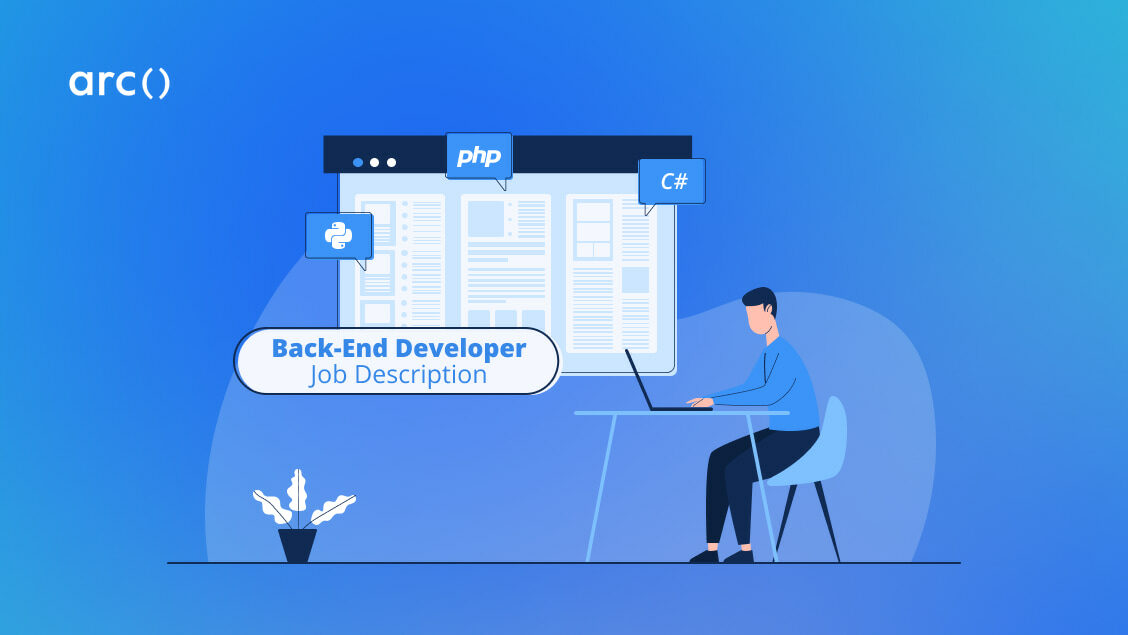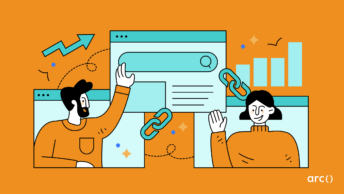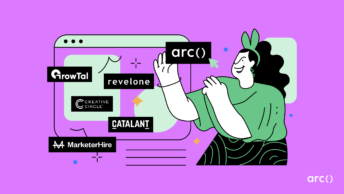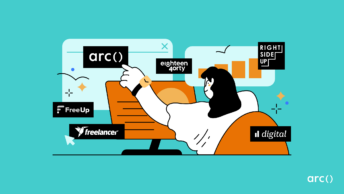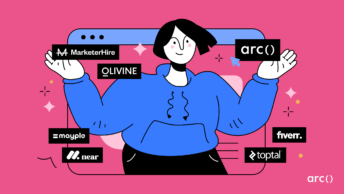Software engineers, especially back-end developers, play a major role in your business’ database management and security. They ensure that your servers work smoothly so that the users have a seamless experience.
As important as they are for a company, hiring a great back-end developer is a pretty challenging task. According to a HackerEarth survey of 2,500 engineering managers and recruiters in 79 countries, back-end developers were the most in-demand candidates.
So, how can you find the right back-end developer with this intense market competition?
Simply by developing an effective, clear, and comprehensive job description that distinguishes your company from the rest.
Your job description must be engaging and reflect your company’s culture. Plus, it should be concise — but include all the necessary information regarding the position.
This helps candidates understand the role correctly and see whether they’re qualified to apply or not.
So, how to craft the best back-end developer job description? Look nowhere else; in this guide, we’re going to tell you everything you need to know, including:
- A comprehensive back-end developer job description template
- A step-by-step guide that helps you develop the best job description for your company
- A list of tips and advice to make your job description stand out
- Concise answers to your frequently asked questions about back-end developer job descriptions
Looking for top talent fast? See how Arc can help you:
⚡️ Find developers, designers, marketers, and more
⚡️ Freelance or full-time remote + fully vetted
⚡️ Save up to 80% with global hires
Hire top talent with Arc risk-free →
Sample Back-End Developer Job Description Template
Let’s start with the basics: what should a back-end developer job description look like? The example below is a great place to start.
Senior Back-End Developer, Remote About Us XYZ Tech Solutions is a tech company that focuses on increasing productivity and outcomes through well-developed apps and technologies. With us, you'll get exposure to the global market and see how we code and develop software programs that enhance user experience. After becoming part of our team, you'll work with an efficient and professional team of software developers. What You'll Do As our senior back-end developer, you'll create, maintain, and upgrade features from the server side, supported by a team of several front-end and full stack developers. We require our back-end developers to create, maintain, test, and fix back-end infrastructure, including databases, data integration, API, core application logic, and other processes that need to be done behind the curtain. Since the job responsibilities can be performed remotely, we simply want our back-end developer to analyze user needs and improve user experience accordingly. Responsibilities • Create codes, build prototypes, and test them. • Organize and analyze data and processes to identify any problem and improve the key areas. • Design strong APIs that support mobile and desktop clients. • Use the cloud to manage data and systems. • Collaborate with the front-end developers and other team members to set objectives and design robust, functional codes. • Enhance the user-end experience. • Develop new, innovative, and in-demand concepts for programs, features, and products from the industry. • Optimize web applications for improved performance and scalability. • Develop automated tests to see if business needs are fulfilled. • Lead projects if necessary. Must-Have Qualifications • Computer science degree or equivalent experience • Proficiency in algorithms and web design • Hands-on experience with programming languages like Java, PHP, Ruby, and Python • Significant experience developing highly secure web applications • Considerable experience with core AWS web-enabling technologies • Growth mindset and problem-solving skills Nice-to-Have Qualifications • Significant experience designing RESTful APIs • Team-leading experience • Significant coding experience and skills with technologies such as: Python Frameworks (Django, Flask, or Pyramid), FastAPI, SQL, Elasticsearch, ORMs, etc. • Good analytical and time-management skills Compensation & Benefits • Competitive base salary, USD$150,000 - $210,000 DOE • Paid vacations • Retirement plans • Paid parental leave • Yearly remote work stipend • Medical, dental, and vision insurance • Paid training courses Get In Touch! If you're looking for a collaborative and positive culture to work in, your search must end with us. Our company's motto is to provide the employees with exceptional benefits and help them maintain a work-life balance. We believe in helping each other out and lifting each other up. If you've already wasted a significant amount of your time, reach out to us now before wasting a single second.
Check out our entire set of tech job descriptions and choose the one which fits your hiring needs best:
- Software Engineer Job Description
- Python Developer Job Description
- Front-End Developer Job Description
- Angular Developer Job Description
- Back-End Developer Job Description
- Cloud Architect Job Description
- JavaScript Developer Job Description
- AWS Cloud Engineer Job Description
- AWS Cloud Practitioner Job Description
- AWS Cloud Architect Job Description
- Scrum Master Job Description
- Full Stack Developer Job Description
- Node.js Developer Job Description
- Cloud Engineer Job Description
- DevOps Engineer Job Description
- Web Developer Job Description
- React Developer Job Description
- Ruby on Rails Developer Job Description
- Agile Product Owner Job Description
- Agile Project Manager Job Description
- Remote Developer Job Description
Or, say goodbye to writing job descriptions altogether with HireAI. Discover top remote developers instantly without manual searching and screening. Try HireAI now!
How to Write a Back-end Developer Job Description
Now you’ve got the idea of what a solid back-end developer job description looks like. So, let’s move on to the step-by-step guide and deep-dive about important parts of a job description.
The essential thing to note is to keep your relevant information on the top so that the candidate doesn’t get bored. Intrigue, but don’t lecture.
Companies that are already popular destinations for tech workers don’t need a long job description, as they don’t have to write much about their company. But if you’re a smaller company competing against established players to attract great engineers, then you’ll need to be creative. Here are some things that can help.
Job Title
The job title is the most crucial part of a job description. After all, if it can’t capture attention, then your job description will never even get read.
When a back-end developer candidate searches for a job on job boards like LinkedIn or Arc, the job title helps them spot appropriate opportunities amongst the thousands of vacancies.
To make your company’s job stand out from this massive crowd, your job title must be strong enough to convince these candidates to click.
The first rule for writing a job title is: “It shouldn’t be too short.” For instance, if you just write “Senior Developer” in the job title, it doesn’t tell the candidate what kind of developer you want. Plus, it doesn’t also show the expertise level required.
Not a good way to get a potential back-end developer to click.
Let’s look at a more specific example of what to (not) do:
Bad Example
Back-end Developer
Good Example
Senior Back-End Developer, Python / GraphQL – Remote
Here is a list of things you can consider including in your job title to make it more compelling:
- Seniority level (e.g., junior, senior)
- Type of developer (back-end in this case)
- Which area or sub-field of back-end development
- Necessary languages and experience with frameworks or technologies (e.g., Python, Java, PHP, machine learning, etc.)
- Location (e.g., on-site, remote, hybrid)
- Company name
Before finalizing your job title, also consider where you will be publishing it — and what other companies are using on that same job board. Adjust length and details to make it make sense in context.
Company Brief
Every candidate is curious to know about the company they’ll be working with.
To briefly tell your potential employees about yourself, you need to stay precise and just describe your prominent features and unique products or services in one or two paragraphs.
You can also describe your company culture a bit — and the industry it belongs to.
So, while writing a brief company description, think: what makes you different from others? Do you prioritize your employees’ well-being? What are your company’s achievements? Do you have a specific mission you’re seeking to achieve?
If so, you need to write it all down.
Here’s a detailed yet engaging company brief from IBM for its Junior Back-End Developer job description:
IBM's greatest invention is the IBMer. We believe that through the application of intelligence, reason, and science, we can improve business, society, and the human condition, bringing the power of an open hybrid cloud and AI strategy to life for our clients and partners around the world. Restlessly reinventing since 1911, we are not only one of the largest corporate organizations in the world, we're also one of the biggest technology and consulting employers, with many of the Fortune 50 companies relying on the IBM Cloud to run their business. At IBM, we pride ourselves on being an early adopter of artificial intelligence, quantum computing, and blockchain. Now it's time for you to join us on our journey to being a responsible technology innovator and a force for good in the world.
If any candidate wants to know more about your company’s mission and vision, you can direct them to your website’s appropriate pages, such as “About Us.”
Role summary
It’s possible that the back-end engineering candidate already knows about their job requirements. After all, if they’re a suitable candidate, they should already know their stuff. Still, you need to write a comprehensive yet small paragraph that summarizes the role.
While writing it, you need to put yourself in the shoes of the back-end developer and think: how would they describe their job responsibilities to a third person?
Here’s a good example of a Senior Back End Developer (Python / GraphQL) job description role summary from LiveArt.io via LinkedIn:
Reporting to the Platform Team Lead, the Senior Back End Developer (Python / GraphQL) is responsible for the development of server-side logic, definition and maintenance of the data model and APIs, and ensuring high performance to front-end requests. This role is 100% remote, with close collaboration and mentorship from experienced developers on our global team.
You can use headings like “Role summary,” “About the Job,” or “Job summary.”
Duties and responsibilities
Writing this section totally depends on your choice. You can list down the duties and responsibilities in a separate section like this one or simply add them to the role summary above.
If you’re going for the second option, ensure to make a bullet point list to highlight the required duties and responsibilities.
You can mention tools, processes, and day-to-day activities your back-end developer may have to perform. Below is an example back-end engineering job responsibilities list from the same job ad we mentioned earlier:
Key Responsibilities • Integrate front-end user-facing elements with applications/products • Define and maintain the data model and APIs • Building reusable code and libraries for future use • Optimize applications and products for maximum speed and scalability • Implementation of security and data protection • Collaborate with Product Management and other stakeholders to devise innovative technical solutions • Write and maintain a full pyramid of tests • Ensure that applications meet quality standards and user experience goals
Must-have skills and experience
This part can also be written as “requirements,” “core qualifications,” “job experience,” or “what you’ll bring.” You have to list down all the necessary abilities, skills, and expertise you want in your back-end developer.
It’s better to make a bulleted list here too.
While writing this section, keep in mind not to go overboard.
If the job opening doesn’t actually require years of experience or certain skills, don’t mention them. For instance, don’t write things like “10 years of blockchain experience.”
And remember: the more requirements you have, the more people will self-exclude. You will potentially end up missing out on some great candidates. So keep the list limited to absolutely necessary skills and experience only.
Here’s how Lyft posted a job ad for a Back-End Software Engineer on their Greenhouse job board:
Experience: • 4+ years of software engineering industry experience • Experience with object-oriented programming • Experience in distributed systems • Experience working with databases, relational or NoSQL • Write clear, scalable and clear design documentation • Design, build and improve a set of team owned components
Nice-to-have skills and experience
Since you’ve already listed down the must-have skills, now you can turn to things that would help the candidates to stand out from the other applicants.
Here, you can list down some skills and expertise that the ideal candidate should have. By placing more skills and expertise in this section, rather than “must-haves,” you can clue your candidates into what you’re looking for — without unnecessarily excluding a lot of skilled developers.
Here’s a sample from Waze’s job post for a back-end engineer posted on Google’s careers page:
Preferred qualifications: • PhD in Engineering, Computer Science, or other technical related field. • Experience in building cloud (SaaS) applications. • Experience with one or more general purpose programming languages, including but not limited to: C#, Objective C, JavaScript, or Go. • Knowledge of Agile software development methodologies • Ability to learn other coding languages as needed. • Object-oriented, database design, and SQL skills.
Pro tip: Showcase your company’s unique characteristics here as well. For example, mention they’ll get bonus points if they love coffee if your office takes care of their coffee supply for the whole day.
Requirements on Education or Certifications
Back-end developers usually don’t need a qualified degree to assure the employer about their skills.
The tech industry is already filled with self-taught back-end developers or those who got trained via coding boot camps.
In general, to level the playing field between applicants with formal qualifications and applicants with other learning pathways, proof of results is what you want to see. So only ask for specific education or certifications if you really need them.
However, if your company still requires it, you can simply mention the lowest level of education, such as a bachelor’s or a master’s degree. Additionally, you can mention the areas of study, like computer science, computational mathematics, etc.
Apart from education, you also have to look out for particular licenses, certifications, or clearance, depending on your company’s sector and the nature of the role. This applies especially to cybersecurity companies and jobs (such as CISSP or CISM) or organizations working with the government in some way (e.g., facility security clearance, E-Verify).
Working Time and Location
The time and location of your company’s operations also hold a special place in the job description.
If you’re posting for an on-site back-end developer role, you’ll have to clearly state the city where you’re located. Bear in mind that requiring an on-site back-end engineer limits your potential hiring pool.
On the other hand, if you’re hiring a remote back-end developer, make that clear. But also describe limits to location, if any (e.g., must be in the same state, must be in the same country, etc.).
Keep in mind questions like: “Will you require your employees to be present in in-person meetings?” “Will you provide them relocation assistance?” and “Do you want the candidate to come to the office?” The answers to questions like these should be obvious from how you’ve written the job description.
Besides, you also have to pay attention to specifying any work hours requirements. For instance: do you want the back-end developer to be available all the time, or just for a few hours of overlap with the team? Can developers set their own hours? Do you have minimum — or maximum — hours to be worked per week?
Developers usually value their time a lot, so if you mention these things, you’re definitely making your job description more unique.
Lastly, inform applicants about any work outside of regular hours, such as on-call requirements or weekend releases. A realistic description of what the job requires will help you find suitable candidates.
Compensation, perks, and benefits
Salary is only one part of a back-end developer employment package. Great benefits and perks are also high on the list of things that employees want from an employer.
Do some research to check that your package is competitive — or even unique — amongst competing job posts. Things you can consider offering include:
- Generous paid time off (PTO) policy
- Reimbursements for professional growth
- Ownership, equity, and/or stock options
- 401(k) & retirement savings programs
- Spending accounts: FSA, HSA, etc.
- Parental leave policy
- Remote work and time flexibility policy
- Stipends, e.g. workstation or co-working spaces
- Company retreats
- Gym membership, magazines, newspapers, etc.
- Company lunches
Onboarding pathway & first year outlook
Although optional to include, this part is a great addition to the job description. It helps the candidate understand the job expectations and requirements. Plus, it also gives them an idea of the role’s scope, as well as what they’ll need to do to achieve success in the role.
You can mention different achievements, successes, or awards that they should aim to earn in the next one, three, or twelve months. This can include any certifications or experiences that help them upgrade their career.
Other Job Description Sections to Consider
If you’ve covered off the above job description sections, you should already be in good shape. But to take your job description to the next level, consider adding some of the types of information below.
Here are a few sections to consider:
Company Culture
You can proudly describe your company culture, values, and mission statement. Of course, if you have already mentioned it in the company brief, you can skip this step. But still, one or two lines won’t harm anyone, no?
How to Apply
Clear instructions on the back-end developer job description about how to apply will help to increase the application rate.
Luckily, many job boards have such options. Alternatively, you can ask employees to attach their cover letters and resumes, or submit via a form or email.
Point of Contact
Details matter when applying for a job position. And giving potential applicants the chance to clarify some aspects of your job description by contacting someone at your company is always appreciated. Mentioning a name and contact information at the company helps guide them throughout the process. It is also a great way to stay in touch!
Legalese
Your country’s national laws may require you to provide information related to how you’ll process candidates’ data.
So, assure the candidates about disclosures of privacy, affirmative action plan/equal employment opportunity (AAP/EEO) statements, etc.
Tech Stack & Team Dynamics
Back-end developers are always interested in knowing how, why, and what they will be working with. What’s their reporting line? What is the team’s meeting cadence? Giving some insight into how the team works is always a point of difference.
Ideal Candidate
This is the human way of describing the “nice-to-haves” that you mentioned above.
This section includes soft skills, such as teamwork abilities, interpersonal skills, time management skills, interests, or hobbies.
Employment Type
Mention whether the job is offered on a contract basis or whether the back-end developer will be an employee. Cover whether the role is part-time or full-time. And for time-limited offers, be clear about the duration of the employment/contract.
Internal Position Title
If there is also an internal position title — or simply a name the candidate will be referred to in your company — mentioning this is a great way to appeal to the candidates.
Screening
Inform candidates regarding any pre-employment tests — such as drug tests or credit checks — if your company performs them.
Hiring Process
Give your candidate some guidance about the entire hiring process. For example, communicate ahead of time the number of live coding sessions and whiteboard interviews and steps involved until the final round.
Key Dates
Mention the date when the job was posted and the last submission date for the back-end engineer job description. In simple words, add a starting date and the last date for the job application.
You can also try Arc, your shortcut to the world’s best remote talent:
⚡️ Access 450,000 top developers, designers, and marketers
⚡️ Vetted and ready to interview
⚡️ Freelance or full-time
Try Arc and hire top talent now →
Tips for Writing a Compelling Job Description for Back-End Developers
Prefer Using Inclusive Language
You need to stay unbiased in your job description at all costs. So, always use inclusive language in your job description and double-check the draft before posting it.
It will help you identify any potential unintentional discrimination that you may have created.
You can also ask another person in your organization to read through what you’ve written and give feedback, or use an online discriminatory language checking tool to get tips on words that should be changed. These tools can check for potential issues, e.g. words that create gender discrimination.
Since you’re keeping the language simple, you should avoid using technical jargon or problematic and difficult phrases. This may turn off your candidates.
Easy-to-read Formatting
It’s human psychology — we only take an interest in things that appeal to our eyes.
Similarly, your job description must be well-formatted, with short sentences written in short paragraphs. This increases your job ad’s readability chances significantly.
Use headings and subheadings/bold text so that candidates can quickly browse through sections they’re more interested in.
Also, highlight important info, link pages to your official website, and use bullet points.
Use a Conversational Tone
Using a conversational tone in your job description will surely help you engage more and more candidates. So, use the second person singular point of view in your writing like you’re talking to them directly.
For example, you can write: “You can be the best fit for this position if you have.…” instead of writing “The ideal candidate must have….”
Include a Specific Instruction
To sort out the candidates who read the job description clearly and those who don’t, you can add a specific instruction to the end of the ad.
For instance, you can ask them to add the job ID number in the first line of their email. You can also ask them to apply to the position via email.
Add a Call to Action Toward the End
Don’t forget the main purpose of writing a job description: to make the job seekers convert into job applicants.
So, always add an engaging, prominent, and strong call-to-action (CTA) toward the end asking them to send an application.
You can also try Arc, your shortcut to the world’s best remote talent:
⚡️ Access 450,000 top developers, designers, and marketers
⚡️ Vetted and ready to interview
⚡️ Freelance or full-time


